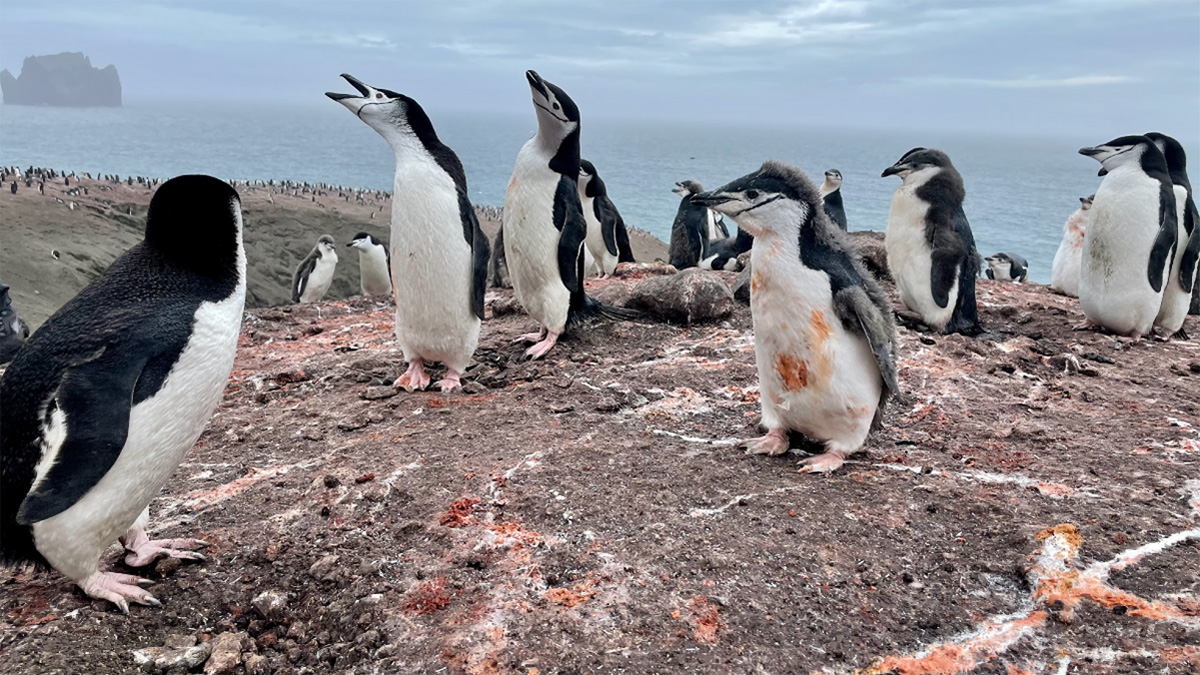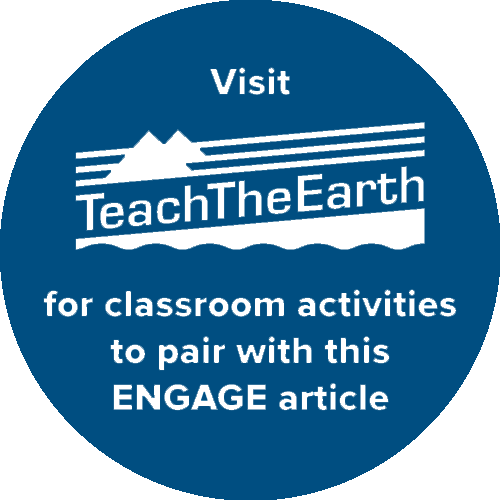For Earth’s oceans to sequester carbon dioxide, they need iron. The element can waft in on dust or spew from hydrothermal vents. But there’s another source: animal poop. A new study has suggested that penguins may help fertilize the Southern Ocean with their iron-rich guano.
Phytoplankton living in the oceans take up carbon dioxide during photosynthesis. When those tiny free-floating organisms die, they sink to the deep sea, carrying that carbon with them. Iron is essential for the phytoplankton to photosynthesize, and their growth is limited by the element’s availability.
Iron follows the food chain, said Oleg Belyaev, an oceanographer at the Spanish National Research Council in Cádiz, Spain. Krill munch on phytoplankton, becoming rich in iron. Previous studies have found that baleen whales, which feast on krill, emit an appreciable amount of iron in their feces. Penguins also mostly subsist on krill, leading Belyaev and his colleagues to wonder whether the seabirds might also be fertilizing the Southern Ocean.
Digging into Guano
The researchers set out to appraise the amount of iron the birds poop out. Their study site, Deception Island in the South Shetland Islands, hosts colonies of chinstrap penguins, named for the black bands that encircle their necks. At one colony, the team sampled guano to measure its iron concentration.
They also collected water offshore near the colony to calculate how much guano reaches the ocean, Belyaev explained. In the summer breeding season, only around 10% of the poop the penguins leave at their breeding sites on land makes it into the ocean, the team estimated. During the rest of the year, penguins are often swimming as they forage, and feces are dropped on pack ice, eventually slipping into the sea as the ice melts in summer.
The team also took a census of the seabirds, using drones to capture footage and a machine learning model to count the penguins. By multiplying the population by how much feces the birds are estimated to produce, the researchers calculated the amount of iron delivered to the ocean. “It’s like a snapshot, but this one is our best approximation,” Belyaev said.
“These species are quite vulnerable, and they play this big role in the iron cycle.”
The researchers checked their estimates by using their drone footage to calculate the volume of guano piled up at their study site. By extrapolation, the team determined that the world’s 8 million or so chinstrap penguins shed some 521 metric tons of iron per year into the ocean. That’s about half of the iron that baleen whales are estimated to recycle. If Adélie and gentoo penguins, the two other species from the same family as chinstraps, are included, their iron output could rival that of whales. The amount of iron coming from nonliving sources such as dust dwarfs that of penguins, Belyaev said.
Compared with numbers from 4 decades ago, the population of chinstrap penguins, and the amount of iron they contribute to the ocean, has dropped by more than 50%. Scientists suspect that a warming climate and changing food webs have contributed to declines. “These species are quite vulnerable, and they play this big role in the iron cycle,” Belyaev said. It’s clear that the loss of such birds also affects Southern Ocean ecosystems, he said. Fewer penguins mean less iron entering the oceans, which could limit the growth of carbon-sequestering plankton.
Researchers only recently have started considering how animals move nutrients around ecosystems, said Katrin Schmidt, an ecologist at the University of Plymouth in the United Kingdom who studies polar regions but wasn’t involved with the new work. “I find this really interesting and fascinating because it’s usually overlooked,” she said.
From Feces to Fertilizer
The iron in penguin guano or whale poop isn’t directly usable by phytoplankton, Schmidt noted. In feces, iron-containing compounds are stuck to solid matter, and it’s not clear how iron goes from this particle-bound form to a dissolved form in water that phytoplankton can take up, she said. Scientists therefore can’t assume that feces are directly fertilizing the phytoplankton. The process that gets iron into a form that phytoplankton can take up needs to be investigated, she said. “It’s quite important to see the complexity of the biochemical processes, and not just these kinds of back-of-the-envelope budgets.”
“They actually give something back to the environment.”
Schmidt said she’s convinced that the penguins’ guano indirectly fertilizes the phytoplankton, but the study’s estimates don’t reveal to what extent. The study’s authors could look at concentrations of chlorophyll, which is produced by these photosynthesizing organisms, in the waters around their study site to see whether they swell with the presence of penguins and their poop, she said.
Polar animals often fascinate people because of their amazing adaptation to the cold environment—that, and their cuteness, Schmidt said. But they have a special importance to their ecosystem. “They actually give something back to the environment, which matters even to our anthropogenic carbon release,” Schmidt said.
—Carolyn Wilke (@CarolynMWilke), Science Writer
This news article is included in our ENGAGE resource for educators seeking science news for their classroom lessons. Browse all ENGAGE articles, and share with your fellow educators how you integrated the article into an activity in the comments section below.


